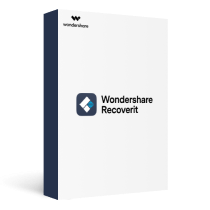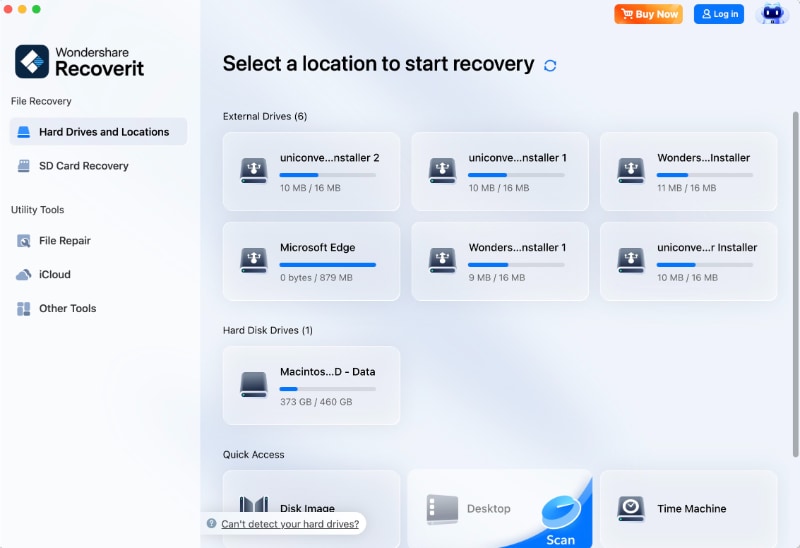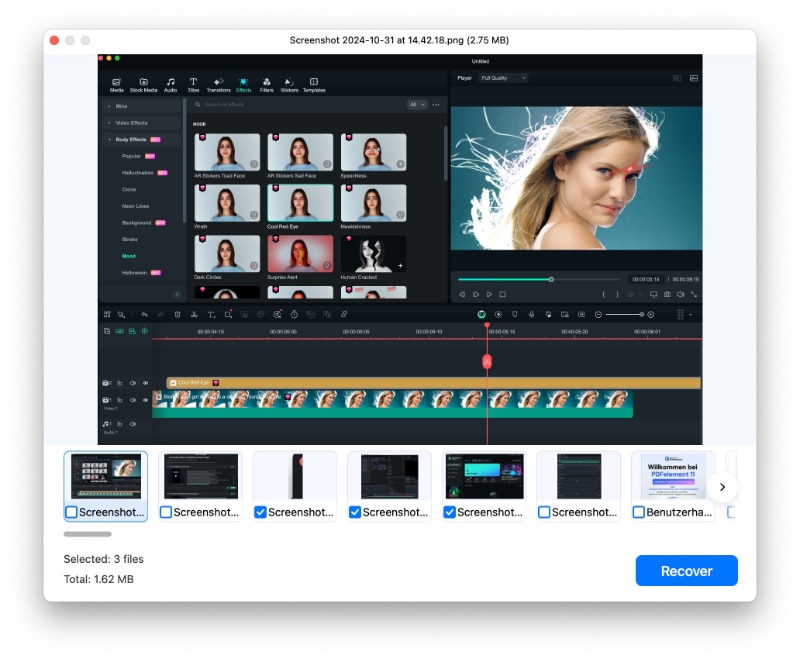You see the notification to update your Mac, but a nagging question stops you: "if I update my MacBook, will I lose everything?" This is a completely valid concern, as our computers hold countless precious files. So, does a standard macOS update wipe your data?
The short answer is no, but the full answer is more complex. This guide will dive into the specifics, explaining why a normal update is safe but also exploring the scenarios where things can go wrong. More importantly, we'll show you how to prevent data loss and what to do if it happens.
Table of Content
Will Updating My Mac Delete Everything?
No, updating your Mac won't delete everything. Apple built macOS from the ground up to be a stable and user-friendly operating system. The company regularly releases new macOS updates to introduce new features and graphical interfaces, update the system apps, improve performance, and fix bugs.
One of its strongest suits is upgrading to a new version while leaving user files intact. In other words, updating macOS doesn't move or rewrite your data. So, the real question is, why does it happen? Why does updating a Mac on rare occasions result in deleting user files? Let's find out.
When Does Upgrading macOS Lead to Deleted Files?
While updating your Mac doesn't necessarily mean that you'll deal with lost data, there is still a chance that an update will delete your files. However, this outcome occurs only in four instances.
| Reasons | Explanation |
| 💽 Not Enough Storage Space | Every macOS update requires a specific amount of storage space. If your question is "If I update my Macbook, will I lose everything," the answer is probably yes if you don't have enough storage space. Insufficient space increases the risk of losing data because the update process might delete some user directories. |
| 📉 Outdated Apps | Most commonly, the update will cause compatibility issues between the outdated apps and the new macOS. If you have obsolete personal app data, it will become unavailable, or your new macOS won't be able to use it. What causes the problem here? Compatibility issues are rare in the Apple ecosystem, especially with macOS. Still, they can occur if the OS gets an update before most apps. |
| 😱 Bugged Updates | Sometimes, bugged updates can also lead to losing your data. For instance, the update may get corrupted if you have a low bandwidth or poor internet connection. To mitigate the risk of bugged updates, ensure a fast and stable internet connection before clicking that update button. |
| ❗ System Errors | Finally, system errors can corrupt data and render it unusable by the new OS. System errors don't occur regularly because every update undergoes thorough testing before release. However, they do happen occasionally, especially on older Mac models. You can avoid it by waiting a few days before updating to ensure you get the latest patches and fixes. |
Okay, now you understand why upgrading macOS deletes everything. Is there anything you can do? Of course, there is.
How To Recover Lost Data After Updating Your macOS
If you lose your data after Mac update, there is a chance that you didn't lose it for good. In other words, there is a way for you to recover your data. You can choose from many excellent data recovery tools with impeccable track records, like Wondershare Recoverit.
- Recovers data from 2000+ storage media, including computer/laptops, external hard drives, USB drives, SD cards, etc.
- Manages over 500 data loss situations, such as deletion, formatting, and disk corruption.
- The user-friendly interface allows you to recover data in just a few clicks.

Here is what you need to do to retrieve lost data after updating your macOS:
Step 1 Download and install Wondershare Recoverit
Head down to the official website to download and install the software. It's an incredibly lightweight app and should take only a minute before it's ready to use on your Mac.

Step 2 Select the drive to scan
Once you launch the app, navigate to the drive you want to scan. It should be the one where your lost files were.

Step 3 Recover your data
During the scan, you can track progress in the bottom left corner and see the files Wondershare Recoverit has managed to recover. Once the scan is complete, select the files you wish to retrieve and click Recover. You can also preview them beforehand.

Knowing how to recover data lost after updating your macOS is as crucial as knowing how to prevent it. Let's see how you can minimize the risk of losing data when updating macOS.
How To Prepare for Mac Updates to Avoid Deleting Files
Since you now know the factors that can come into play when upgrading macOS and potentially lead to data loss, you can prepare better. Discover the best practices to get your Mac ready for updates and avoid deleting files.
Task 1: Compatibility Considerations
First, ensure your Mac supports the new macOS version. Compatibility issues don't only come from incompatible software but also hardware. Your system must be compatible with the macOS version you want to install. You can install the latest macOS version - macOS Sonoma on any of the following Mac models:
| Mac Types | Mac Models |
| MacBook Pro | MacBook Pro (16-inch, 2023) MacBook Pro (14-inch, 2023) MacBook Pro (13-inch, M2, 2022) MacBook Pro (16-inch, 2021) MacBook Pro (14-inch, 2021) MacBook Pro (13-inch, M1, 2020) MacBook Pro (13-inch, 2020, Two Thunderbolt 3 ports) MacBook Pro (13-inch, 2020, Four Thunderbolt 3 ports) MacBook Pro (16-inch, 2019) MacBook Pro (13-inch, 2019, Two Thunderbolt 3 ports) MacBook Pro (15-inch, 2019) MacBook Pro (13-inch, 2019, Four Thunderbolt 3 ports) MacBook Pro (15-inch, 2018) MacBook Pro (13-inch, 2018, Four Thunderbolt 3 ports) |
| MacBook Air | MacBook Air (15-inch, M2, 2023) MacBook Air (M2, 2022) MacBook Air (M1, 2020) MacBook Air (Retina, 13-inch, 2020) MacBook Air (Retina, 13-inch, 2019) MacBook Air (Retina, 13-inch, 2018) |
| iMac | iMac (24-inch, M1, 2021) iMac (Retina 5K, 27-inch, 2020) iMac (Retina 5K, 27-inch, 2019) iMac (Retina 4K, 21.5-inch, 2019) |
| iMac Pro | iMac Pro (2017) |
| Mac mini | Mac mini (2023) Mac mini (M1, 2020) Mac mini (2018) |
| Mac Studio | Mac Studio (2023) Mac Studio (2022) |
| Mac Pro | Mac Pro (2023) Mac Pro (2019) |
Dig deeper into the update's specifications to install it on your Mac without data loss.
Task 2: Back Up Your Data With Time Machine
As for built-in tools macOS offers, you should check the Time Machine app. This app lets you back up and restore your data. Here is how you can use it:
- Connect your USB or external hard drive.
- Click the Apple in your top bar and select System Preferences.

- Start Time Machine.

- Select your USB or another external drive as the backup disk.

- Click Use Disk to create a backup.
Task 3: Free up Storage
To successfully update your macOS, you need sufficient storage. Check the current state of your local drive and read the update requirements. See how much storage space it requires and ensure you have enough free space before updating your Mac.
Here is how to free up storage on your Mac to ensure the new macOS version has enough space to install:
- Go to the Apple menu > About this Mac > Storage > Manage.
- Select Recommendations in the left sidebar. You can see how much storage space you have available at the top.
- Choose the preferred method to free some space: Store in iCloud, Optimize Storage, Empty Trash Automatically, or Reduce Clutter.

Task 4: Update Your Apps
Software companies behind the most popular apps for macOS release necessary updates to make their apps compatible with the newest macOS versions. Therefore, update your apps to avoid compatibility issues and prevent data loss.
All of the above can be a lot of information to process. To help you out, here is a cheat sheet for updating a MacBook correctly to avoid deleting everything.
Conclusion
Apple ensures that macOS updates are straightforward. To answer your "if I update my MacBook, will I lose everything" question: yes, it might happen. System errors, insufficient storage space, a slow internet connection, and other factors can result in data loss after your macOS update completes.
To mitigate this risk, check whether your Mac is compatible with the new macOS, ensure you have enough storage space, and back up your Mac. If you still lose data, you can get it back. A reliable data recovery tool like Wondershare Recoverit can retrieve your files even when updating macOS deletes everything.
Read More
How to Recover Lost Files After MacOS Sequoia 15.0 Update?
Will You Upgrade to macOS Sequoia 15.0 Now?
FAQs
-
Why would a computer update cause files to be lost?
Normally, an update shouldn't cause data loss. However, computer update file loss can occur if the update process is interrupted (e.g., by a power outage), if there's pre-existing corruption on your hard drive that the update exacerbates, or if there isn't enough free disk space for the update files to unpack properly. -
I updated my Mac and now some files are gone. Can I get them back?
Yes, there's a good chance. The first place to check is your Time Machine backup, which is the easiest way to restore lost files. If you don't have a backup, you can use professional data recovery software to scan your drive for the "deleted" files, which are often still physically present until overwritten. -
Can a computer update corrupt files?
Yes, it's possible. A computer update can corrupt files if the writing process is interrupted or if the update encounters a bad sector on your hard drive. This is why having a full backup before any major system upgrade is not just recommended, but essential for peace of mind. -
How do I ensure I don't lose anything when updating my Mac?
The single most important step is to make a complete, up-to-date backup of your Mac using Time Machine before you begin. Additionally, ensure you have a stable internet connection, sufficient free space on your drive (at least 20-30GB is safe), and that your MacBook is connected to a power source.



 ChatGPT
ChatGPT
 Perplexity
Perplexity
 Google AI Mode
Google AI Mode
 Grok
Grok























